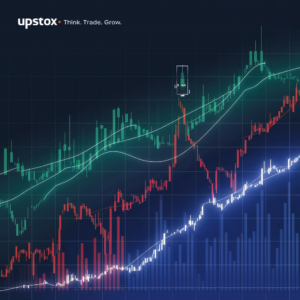Upstox: A Snapshot of Its Business Structure and Success-
Upstox is a leading discount brokerage firm in India, founded in 2009 by Ravi Kumar, Raghu Kumar, and Shrinivas Vishwanath. Headquartered in Mumbai, it has redefined stock market trading with its low-cost, technology-driven solutions, attracting a diverse user base.
Contents
Core Elements of Upstox’s Business Model-
1. Discount Brokerage Model-
At its core, Upstox operates on a discount brokerage model, offering services at significantly lower costs compared to traditional brokers. Here are the standout features of this model:
Flat-Fee Brokerage: Traders pay a fixed fee for trades across various segments, ensuring transparency and predictability in costs.
Digital-First Approach: By offering paperless account opening and digital trading, Upstox eliminates unnecessary overhead costs, passing the savings onto its users.
Product Range: The platform caters to diverse trading needs, offering products like equity, commodities, derivatives, mutual funds, IPO investments, and digital gold.
Revenue Streams: Diverse and Resilient
Upstox’s revenue model is designed to maximize its earnings while maintaining affordability for users.
Key revenue streams include:
Brokerage Fees: The company’s primary source of income comes from flat fees charged on trades, making it cost-effective for both small-scale and high-frequency traders.
Subscription Plans: Premium features such as advanced charting tools, technical indicators, and APIs are available for a subscription fee.
Margin Funding: Upstox offers leverage to traders, enabling them to enhance their trading capital and generate higher returns. The interest earned on this funding contributes significantly to revenue.
Depository Participant (DP) Charges: As a registered depository participant with CDSL, Upstox earns fees for facilitating demat transactions, including share transfers and pledges.
Cross-Selling Financial Products: The platform generates additional income by offering mutual funds, insurance, and other financial services to its user base.
Platform Monetization: By licensing APIs and advanced trading tools, Upstox earns from developers and fintech companies integrating these features into their systems.

Leveraging Technology for a Seamless User Experience-
1. Advanced Trading Platform-
Upstox’s proprietary trading platform is at the forefront of its technological innovation. Features include:
Real-Time Data: High-speed data feeds ensure users have the most accurate market information at their fingertips.
Algo Trading: Automated trading strategies enable users to execute trades without manual intervention, catering to sophisticated traders.
Customizable Dashboards: Traders can personalize their interface to suit their preferences, enhancing usability.
2. AI-Powered Insights-
By incorporating artificial intelligence, Upstox offers:
Personalized Portfolio Analysis: AI tools analyze user portfolios and provide tailored investment insights.
Risk Management Tools: Automated alerts and notifications help users stay informed about market movements and mitigate risks.
3. User-Friendly Design-
The platform’s intuitive interface caters to both beginners and seasoned traders, ensuring a seamless experience across desktop and mobile applications.
Commitment to Compliance and Security-
1. Regulatory Registrations-
Upstox operates under strict compliance with Indian regulatory authorities:
Securities and Exchange Board of India (SEBI): Ensures adherence to market regulations.
National Stock Exchange (NSE) and Bombay Stock Exchange (BSE): Allows trading across India’s primary exchanges.
Multi Commodity Exchange (MCX): Provides access to commodity trading.
CDSL Participation: Functions as a depository participant, ensuring secure storage of user securities.
2. Transparency and Security Measures-
To build trust and ensure user safety, Upstox prioritizes:
Regular Audits: Comprehensive checks to ensure financial and operational transparency.
Cybersecurity: Advanced encryption and multi-factor authentication safeguard user data and funds.
Challenges and Future Outlook:–
Challenges-
Intense Competition: Rival discount brokers like Zerodha, Angel One, and Groww present stiff competition.
Regulatory Changes: Adapting to evolving compliance norms requires agility and investment.
Cybersecurity Threats: Protecting against potential breaches is a constant challenge in the digital age.
Future Opportunities
Global Expansion: Upstox aims to extend its reach beyond India, tapping into international markets.
AI and Blockchain Integration: Investing in advanced technologies for enhanced trading and security.
Tier-2 and Tier-3 Market Penetration: Increasing financial inclusion by targeting smaller cities and towns.
New Product Development: Expanding its offerings to include innovative financial instruments and services.
Conclusion: A Pioneer in India’s Discount Brokerage
With its blend of affordability, technological innovation, and a customer-first approach, Upstox has solidified its position in India’s investment landscape. By focusing on future-ready tools and expanding its reach, the platform is poised to remain a dominant force in the ever-evolving brokerage industry.
Disclaimer-
The information provided in this article is for general informational and educational purposes only and should not be considered as professional financial advice. While we strive to ensure the accuracy and reliability of the information presented, we do not guarantee its completeness, timeliness, or suitability for your specific financial needs. Always consult a certified expert before making financial decisions.

